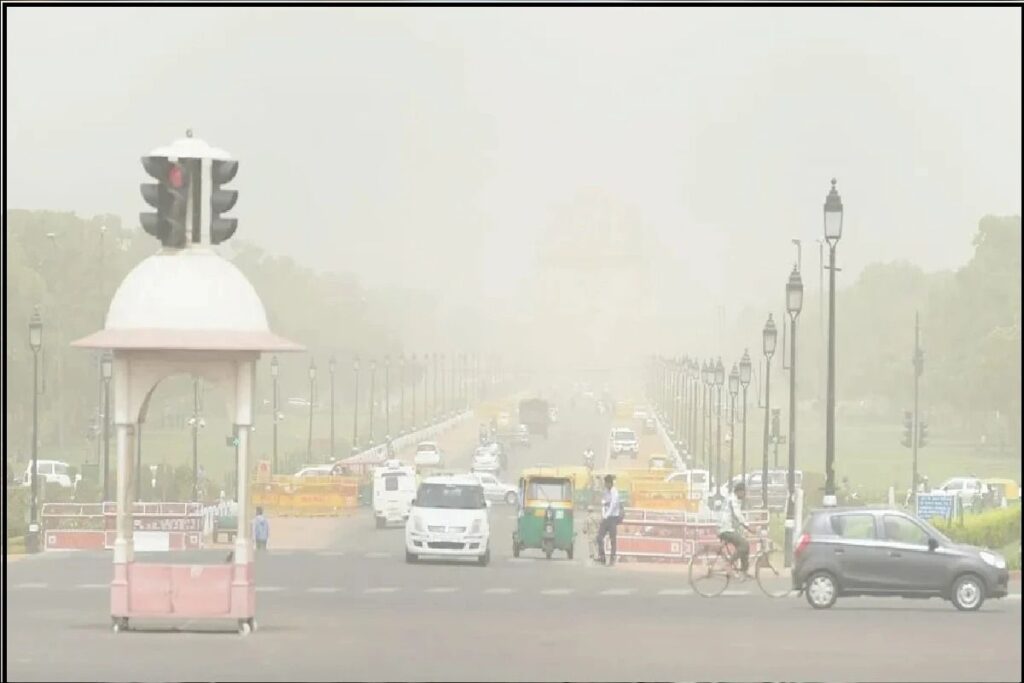NEW DELHI|SEPTEMBER 2,2025| SKY LINK TIMES|
Delhi’s residents are facing more than just smoggy skies and choking pollution. A new scientific study has revealed a hidden threat—airborne disease-causing bacteria hitchhiking on toxic air particles, silently increasing health risks for millions in the capital.

Researchers from the Bose Institute, an autonomous body under the Department of Science and Technology (DST), have found that pathogenic bacteria are twice as abundant in densely populated areas of Delhi compared to less crowded regions. Their findings, published in the international journal Atmospheric Environment: X, shed light on an overlooked connection between pollution and public health.
How microbes ride pollution
The study shows that these harmful bacteria use PM2.5 particles—tiny dust specks less than 2.5 microns in diameter—as carriers. Because PM2.5 is small enough to penetrate deep into human lungs, the pathogens get a free ride into the body. This makes Delhi’s already hazardous air quality even more dangerous.
“These microbes don’t just float randomly. They attach themselves to pollution particles and travel across the city, increasing the chances of infections,” explained Dr. Sanat Kumar Das, lead researcher of the study.
The bacteria identified are linked to respiratory infections, gastrointestinal diseases, oral problems, and even skin infections—all of which are already common health issues in Delhi.
Delhi’s unique risk factors
Delhi’s location in the Indo-Gangetic Plain (IGP)—among the most polluted and densely populated regions in the world—makes the city particularly vulnerable. Geography and weather patterns worsen the problem.
During winters, western disturbances bring lower temperatures and higher humidity. At the same time, winds weaken and the atmosphere develops a shallow boundary layer. This combination traps pollutants close to the ground. According to the study, these stagnant conditions create an “ideal environment” for microbes to thrive.
Also Read: https://skylinktimes.in/indian-scientists-develop-compound-to-combat-breast-cancer/
High-risk windows for disease spread
The research highlights seasonal transition periods—from winter to summer—as “high-risk windows” for airborne disease spread. Hazy days or light winter rains make conditions worse, allowing pathogens to survive longer in the air.
“During these periods, people are not just breathing in pollution but also invisible microbes that ride on it,” said Dr. Das.
Why this matters for public health
While discussions on Delhi’s air pollution usually focus on respiratory illnesses, lung cancer, and heart diseases, this study highlights a new layer of risk: the spread of infections through polluted air.
Scientists believe that better understanding the interaction between weather, pollution, and microbial life could help predict disease outbreaks and shape smarter urban health strategies.
A wake-up call for megacities
Experts say the findings should serve as a wake-up call for Delhi and other megacities worldwide. With millions already exposed to dangerous levels of air pollution, the hidden microbial load could further strain public health systems.
“Air pollution is no longer just about toxic chemicals or dust. It’s also about the pathogens we may unknowingly breathe in every day,” noted the study’s authors.
As Delhi prepares for another pollution-heavy winter, scientists urge policymakers to consider this microbial dimension when planning health responses and city safety measures.
The message is clear: cleaner air doesn’t just mean fewer pollutants—it could also mean fewer infections.
For More Info Stay Tuned: https://skylinktimes.in



